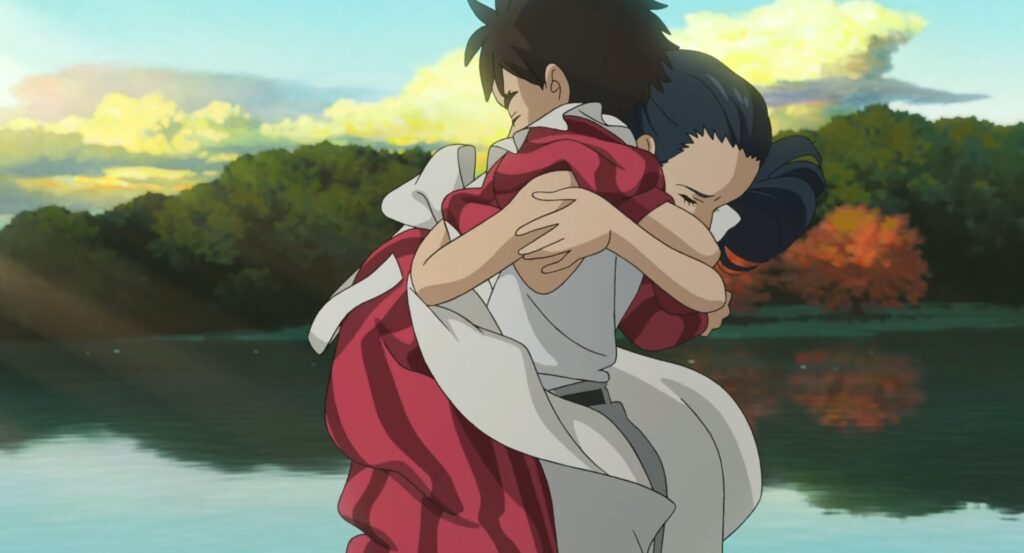The Boy and the Heron
Curiosity furies at the core of the epic hand-drawn 2D feature by Hayao Miyasaki. The twelve years old protagonist’s mother abruptly passes away, prompting the family to relocate to their estate in the countryside where the boy meets his new stepmother. It is the 1940s in Japan and war rages in the background. The emptiness Mahito feels, trying to make sense of the loss of his mother to the underworld, is deep. A dream-like fall unfolds as he is not avoidant of grief and the call to inner adventure will be answered, retreating to the tower—containing—across a confined entryway, as the willingness to orientate desire guides Mahito to where he must become busy disassembling. Of course, his presence is welcome in the strange place. Because the unconscious is real. Companioning ghosts, chimeras, fantasies, and the self-generation of symbols occupy the quest. Mahito is abducted into some other realm of feeling where all kinds of assumptions are going to be challenged. We navigate as best we can and “it should be smooth sailing after the big wave”. Reconciling with the talking heron is an important step, indispensable. They must become allies. Everyone has a role to play, even the Pelicans. Always a choice to keep learning into the depths or waking back into reality, ideally not too soon. Our apprentice is protected, taking flight, submerged in a totally unfamiliar place and being cared for. At the table of the Great Grand Uncle where the ivory tower is crumbling, it will be the end of illusions ushering a return into a healed connection to the world. Acceptance comes at a great price, brought forward through poetry. The tale is not a voyage for the rational mind rather an ode to the symbolic attitude.
